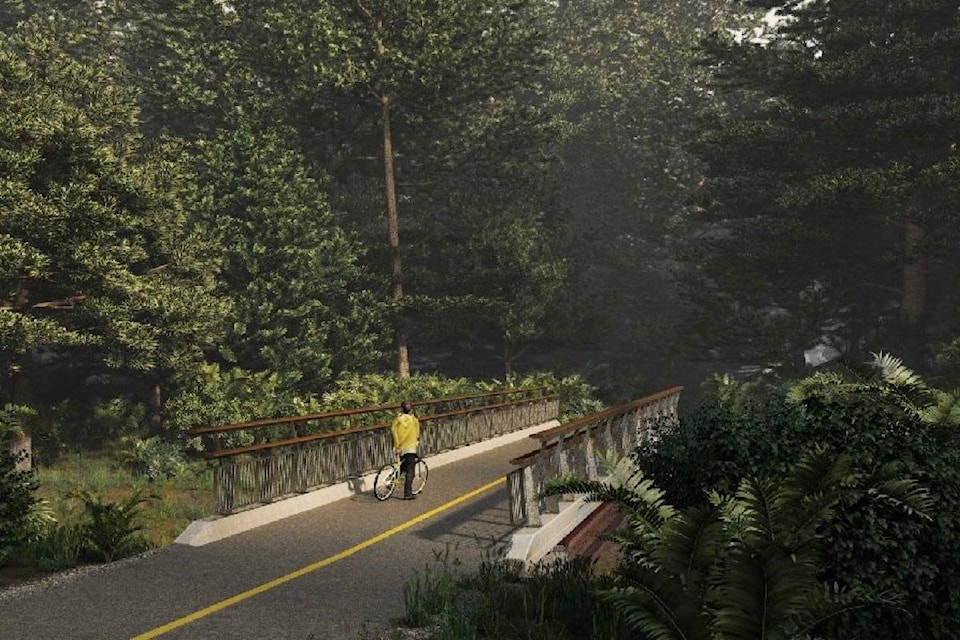The Pacific Rim National Park Reserve will soon be seeking out contractors to start working on the next phase of the ‘Ups-cheek ta-shee’ trail it is building to connect its north and south borders.
“When built, this new multi-use trail will give generations of residents, Canadians, and visitors the opportunity to explore the Pacific Rim region by bike or by foot and in a greener and more experiential way,” the Park Reserve’s superintendent Karen Haugen told the Westerly News via email.
The trail was announced by the federal government in 2016 and its budget was initially set at $17.7 million, but it’s unclear if that’s still the expected price tag as Haugen said the project’s budget is being reassessed.
“As stewards of the land, Parks Canada is responsible for ensuring building does not outpace our environmental, social and legal obligations. As such, we are taking some additional time to finalize the design of the trail before we begin the next phase of construction. We will share more information about the schedule and budget once these details are finalized,” Haugen said. “By taking some additional time now, we can meet our obligations and ensure Canadians will be able to enjoy the new trail for generations to come.”
Haugen said the trail’s design and other details are being finalized and a Request for Proposals will soon be posted for the project’s next step.
“The next stage of construction would include preparation of the trail bed and activities such as bringing in gravel, installing drainage culverts, and building bridges,” she said.
Construction on the roughly 22-kilometre trail started in 2016 when trees began being cleared from the park’s north end and a route from Incinerator Rock at Long Beach to the Park Reserve’s southern boundary was cleared in early 2018.
“While we don’t have the exact number of trees removed, as work on [Ups-cheek ta-shee] progresses, Parks Canada is taking a responsive approach by adapting trail alignment, design, and building activities to each unique area of the park reserve where the trail will pass to limit environmental impact,” Haugen said. “For example: modifying and refining the trail route and design to bypass large, old-growth trees and ephemeral ponds; incorporating data from a Traditional Use Study and advice from local First Nations; and, re-routing to avoid newly discovered archaeological sites.”
Haugen said “extensive environmental, archaeological and geotechnical studies” were completed before the clearing work began and a route was mapped out, but that route has been altered several times as crews have discovered a variety of important historic sites.
“The west coast of Vancouver Island has a long history of human habitation, dating back many thousands of years. Archaeologists have identified a number of Indigenous and settler sites in the national park reserve,” she said. “For the safety of visitors, and to protect and preserve the integrity of these sites, the trail has been re-routed in some instances. We continue to work with the local Indigenous communities to assess each site as they are identified.”
